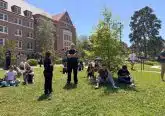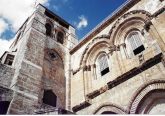Off the beaten path: Pope looks far afield for new cardinals

IMAGE: CNS photo/Bob Nichols, Catholic Moment
By Cindy Wooden
VATICAN CITY (CNS) — Choosing new members of the College of Cardinals, Pope Francis once again looked to countries and particularly to dioceses that were not and never had been represented in the body that advises the pope and bears responsibility for electing his successor.
Announcing the names of 17 cardinals he will create Nov. 19, Pope Francis chose men from 14 nations, which will bring the total number of countries represented in the College of Cardinals to 79. When he announced the names Oct. 9, the college had members from 72 countries.
The cardinal electors — the prelates under the age of 80 and therefore eligible to vote in a conclave to elect a new pope — currently represent 57 nations; after the consistory to create new cardinals, the group will bring together men from 60 countries.
The 115 cardinal electors who entered the conclave in 2013 that elected Pope Francis had come from 48 countries. Eight years earlier, the group that elected now-retired Pope Benedict XVI came from 53 nations.
Under Pope Francis, the idea that some large archdioceses are always led by a cardinal is fading, but is not altogether gone. His latest choices included the archbishops of Chicago, Malines-Brussels and Madrid. But other traditional cardinal sees like Venice and Turin in Italy or Baltimore and Philadelphia in the United States were not included in the pope’s latest picks.
Not only did Pope Francis name the first ever cardinal electors from Bangladesh, Central African Republic and Papua New Guinea, he named Archbishop Joseph W. Tobin the first cardinal elector of the Archdiocese of Indianapolis; Archbishop Baltazar Porras Cardozo the first cardinal elector of Merida, Venezuela; and Archbishop Carlos Aguiar Retes the first archbishop of Tlalnepantla, Mexico, to be a cardinal elector. (The late Cardinal Joseph E. Ritter of St. Louis had been archbishop of Indianapolis 15 years before being named cardinal and the late Cardinal Adolfo Suarez Rivera of Monterrey had been archbishop of Tlalnepantla 14 years before being named a cardinal.)
The 2016 consistory will be the third called by Pope Francis to create new cardinals and, once again, members of the Roman Curia received just a nod. Irish-born U.S. Bishop Kevin J. Farrell, the prefect of the new Vatican office for laity, family and life, is the only member of the Curia chosen this time. Archbishop Mario Zenari, the pope’s nuncio to Syria, also was tapped, but the pope made it clear that the Italian archbishop would remain in war-torn Syria.
After the distribution of red hats Nov. 19, members or retired members of the Curia will make up 28 percent of the cardinal electors. Just over 35 percent of the members of the group that elected Pope Francis in 2013 were Curia veterans, although only 24 percent of the cardinals in the conclave that elected Pope Benedict were.
After the consistory, the electors named cardinals by Pope Benedict will account for just over 46 percent of the total; just over 36 percent will have been named by Pope Francis; and just over 17 percent will be cardinals created by St. John Paul II.
St. John XXIII and Blessed Paul VI expanded the size of the College of Cardinals and began the modern internationalization of the body. In 1970, Blessed Paul decreed that cardinals over the age of 80 could not vote in a conclave, and in 1975 he set the limit of cardinal electors at 120 men.
Fifty-two percent of the members of the conclave that elected Pope Francis were European. In early October, 46.8 percent of the cardinal electors were from Europe, and after the consistory the group will make up 44.6 percent of the electors. The 24 Italian electors as of Oct. 10 account for 21.6 percent of those eligible to enter a conclave. With Cardinal-designate Zenari, the Italians will account for 20.6 percent of the electors after Nov. 19.
The second-largest group is and will be from North and South America. Currently 30 of the 111 electors, or 27 percent, are from the Americas. The percentage will grow to 28 percent when the new cardinals are inducted. With three new U.S. cardinals, the United States and Canada will account for 10.7 percent of the college.
After Nov. 19, the percentage of African electors will rise to 12.4 percent from its current 11.7 percent; the percentage from Asia will decline slightly to 11.5 percent from its current 11.7 percent; and the group from Oceania — Australia, New Zealand and the South Pacific — will rise to 3.3 percent from its current 2.7 percent.
With 25 electors after the consistory, Italy will remain the nation with the most cardinals by far. The United States will be second with 10 electors. France and Brazil each will have five electors. Spain, Poland, Mexico and India each will have four.
At 49, Cardinal-designate Dieudonne Nzapalainga of Bangui, Central African Republic, will become the youngest member of the College of Cardinals. Only one other member of the body — Cardinal Soane Mafi of Tonga, 54 — was born in the 1960s.
– – –
Follow Wooden on Twitter: @Cindy_Wooden.
– – –
Copyright © 2016 Catholic News Service/U.S. Conference of Catholic Bishops. www.catholicnews.com. All rights reserved. Republishing or redistributing of CNS content, including by framing or similar means without prior permission, is prohibited. You may link to stories on our public site. This copy is for your personal, non-commercial use only. To request permission for republishing or redistributing of CNS content, please contact permissions at [email protected].













